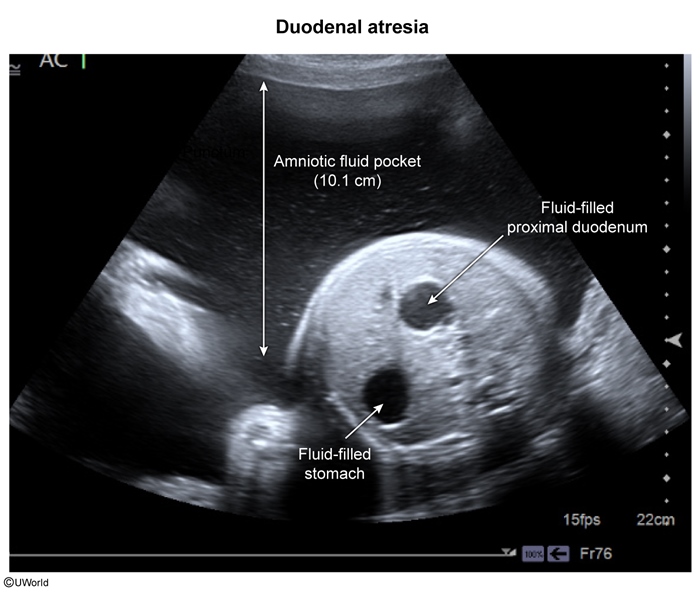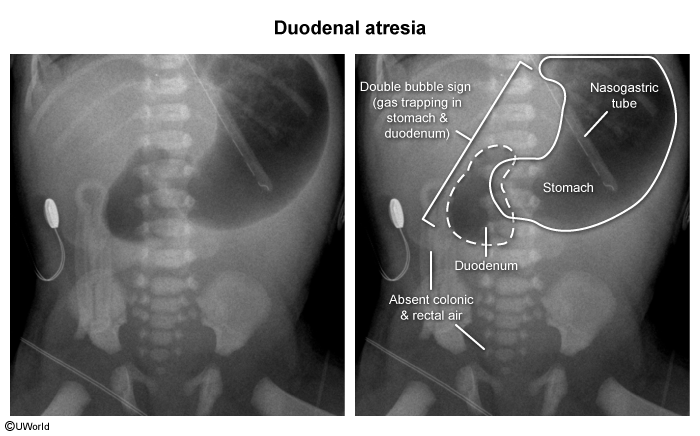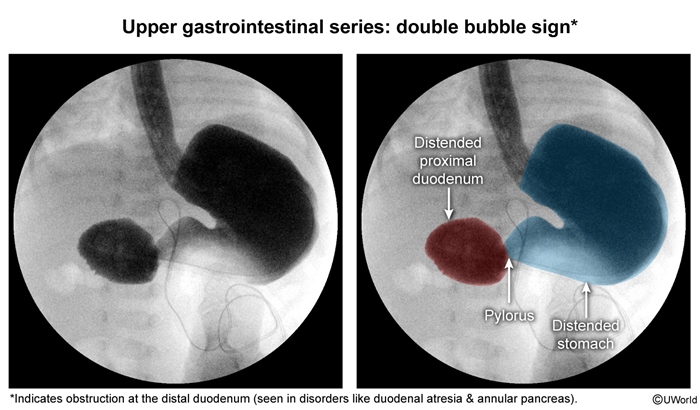Duodenal Atresia
Article Sections
Introduction
Duodenal atresia is a congenital defect in which a segment of the duodenal lumen is completely obstructed. Patients have feeding intolerance and bilious (most common) or nonbilious emesis in the first 1-2 days of life.
Pathophysiology and risk factors
Normally, during weeks 6-7 of gestation, there is a brief period in which portions of the fetal intestinal lumen are occluded due to epithelial proliferation. This is followed by recanalization during weeks 8-10. Failure of recanalization can cause intestinal atresia anywhere along the gastrointestinal (GI) tract. In the duodenum, the atretic segment is typically distal to the second part of the duodenum (Figure 1), where the common bile duct enters the intestine at the major duodenal papilla (Figure 2).
Duodenal atresia can occur in isolation in up to 50% of all cases. It may also occur in association with other conditions, including:
Continue Learning with UWorld
Get the full Duodenal Atresia article plus rich visuals, real-world cases, and in-depth insights from medical experts, all available through the UWorld Medical Library.
Figures
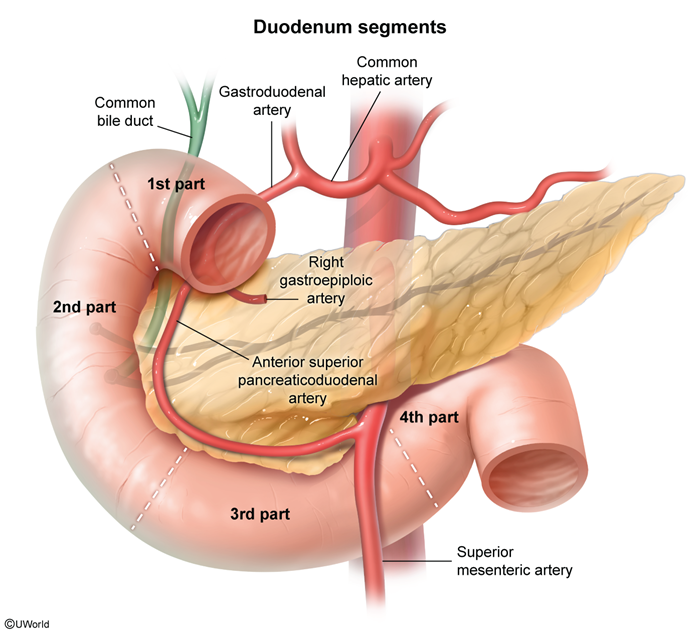
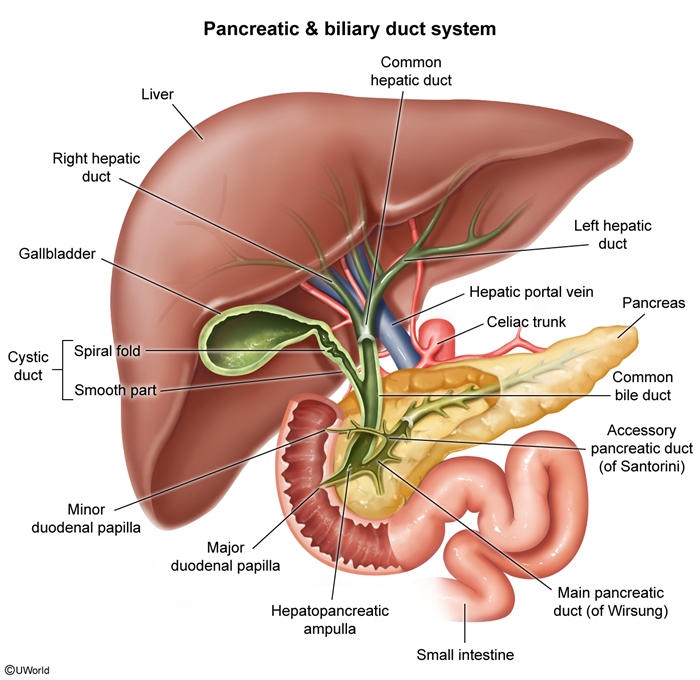
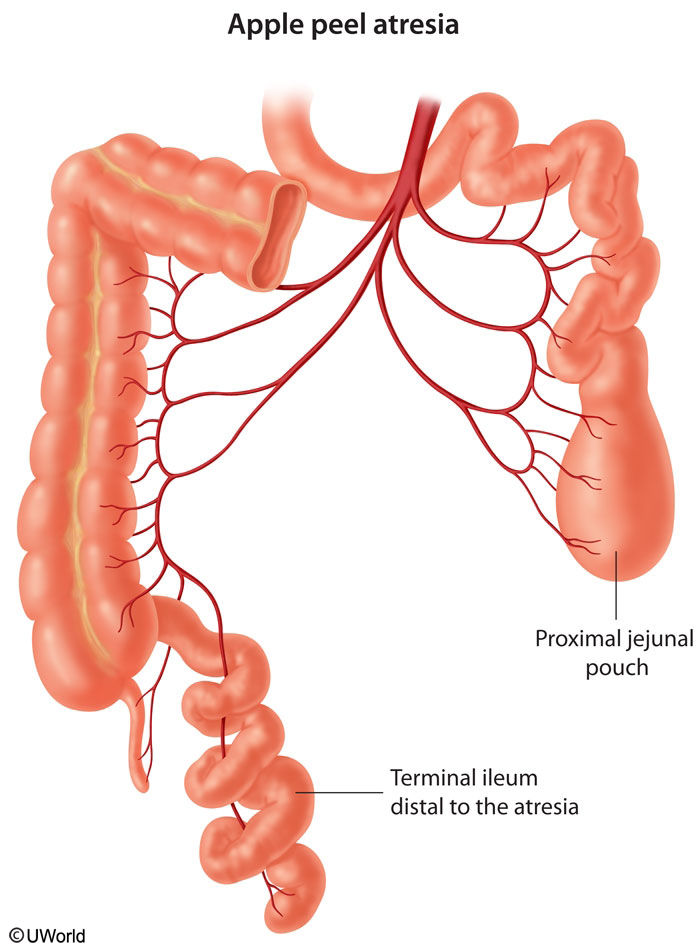
Images
